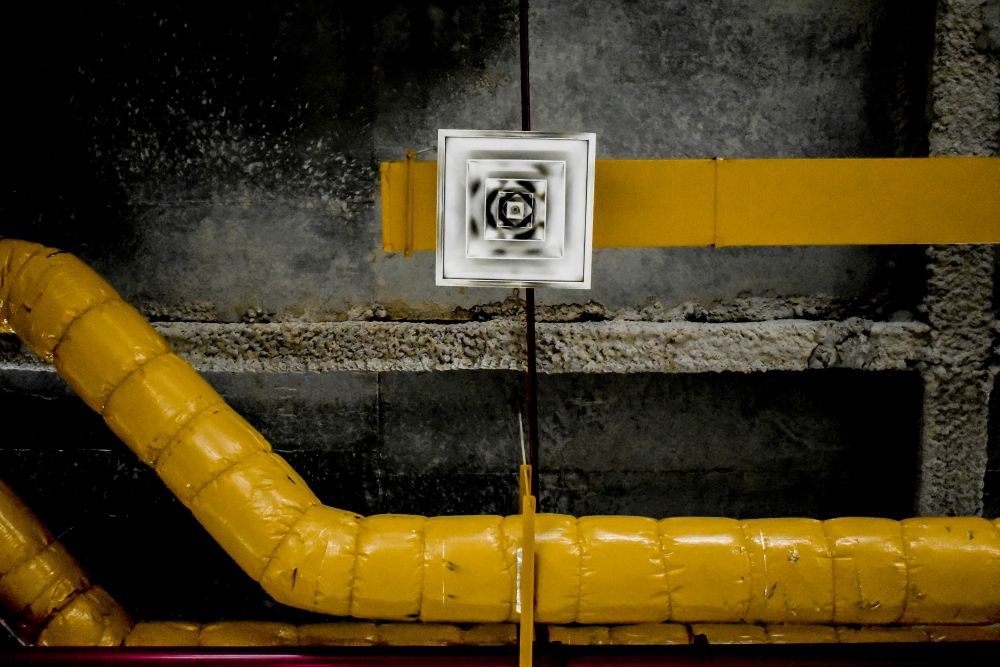Why is my house uncomfortable? Take a look at your DUCTS

If you have a central air conditioning or heating system and want to give it a boost for less cost than a new unit, we suggest you look at how the air handler delivers the hot or cold air–through ducts. Ideally, the ducts are relatively short and routed in straight lines with the fewest turns possible, because these 3 factors are very important in resistance to air flow.
Ideally, if you are having a new central HVAC unit installed, the contractor should look at your existing ductwork to size it and/or balance the system. Why? Because the fan needs to be sized appropriately to get the air from the return, through the air handler, to the farthest room to heat or cool it adequately. If you’re interested in learning a bit more about these calculations, here is a video that explains how this calculation is made! This expert shows how every fitting (elbow, reducer, etc.) translates to “equivalent length” in duct, which is added to the actual straight run lengths of ducts, to get a total duct length. Then he mentions something important: that internally insulated and flex ducts have different “ductulators” because the resistance inside them is greater.
It’s important to get “down and dirty” (or in the case of an attic, “up and dirty”) and go inspect your ductwork yourself, if you can! Here are some things to look for:
-
Check to see that ducts are routed with the least amount of turns. Each turn adds more resistance to the run supplying the room. If you have a “ball of worms” in the attic, it’s probably because they weren’t planned correctly in the first place, or later additions were routed around existing ducts.
-
Check to see that transitions from small to large ducts are made with proper transition fittings, not just an abrupt change from, for example, 12” to 8” ducts. This includes transitions from the plenum.
-
Make sure decommissioned ductwork (dead-ends) are removed completely
-
If you have flex duct, make sure it’s properly installed (see below)
-
Make sure all joints are sealed properly
Flex duct
Flex duct for residential use was first patented in 1965, but it has been around for longer. It became popular in the 1970’s-80’s because it saves labor and some material costs. However, it has to be installed properly so that airflow is not sharply reduced. When flex duct is pulled tight it has the same resistance as metal duct. This is good–low resistance means more airflow! Sadly, many installers don’t pull the duct tight and drape it over “hangers” which allow the duct to slump and cut off much of your precious conditioned air. Installing flex duct like this greatly increases the resistance of the duct and puts strain on your HVAC system.
Flex duct is very good for noise control. It can work great when it’s properly installed, too: according to Allison Bailes of Energy Vanguard in an article on GreenBuildingAdvisor, “Its best use is for relatively short runs in a trunk-and-branch system, not entire air distribution systems.” And according to Mike MacFarland, a home performance contractor in California, “The trick to getting these installations right is to use rigid ductwork for all ‘deviations from straight,’ then pull the ductwork taut between the two ends which now point towards each other.” This basically allows for flex duct to be used more like rigid duct, and rigid duct to be used for changes in air flow direction. In order to support it properly, flex duct needs to have hangers “the supports should be no greater than 4 feet apart and there should be no more than ½ inch sag per foot between the supports. A connection to rigid duct or equipment is considered a support joint.” (Support at Intervals for Flex Ducts) See this helpful article for more tips on how they should be installed and supported.
Here’s a “don’t” for sure!
Source: 4 Rules for Flexible Ducts that Remodelers Need to Know
How to seal joints in ducts
Technically, duct joints should always be secured with #8 sheet-metal screws before seams are sealed with mastic or airtight tapes (the grey “duct tape” you buy in hardware stores is not approved for this use!). Most energy-conscious builders seal duct joints with mastic. Mastic is a gooey, non-hardening material with a consistency between mayonnaise and smooth peanut butter. The mess factor alone deters many techs from using it, and it also is hard to install on fittings in close quarters or clamped flex duct joints. Foil-backed butyl tape is a popular choice, but unlike mastic, you need to make sure the surfaces are clean before applying it, otherwise the tape will just stick to the dirt and not seal the seam. This tape doesn’t work well on fiber board, either. (Sealing Ducts: What’s Better, Tape or Mastic?)
Internally insulated ducts
Finally, here’s a tip from a health point of view: internally insulated ducts can become very dirty and even moldy over time, and they can’t be cleaned. Dirt or mold can be encapsulated, but not mechanically cleaned away, because the rotating brushes used for duct cleaning will tear up the surface of the insulation and just add to the particle/allergen problem. Therefore, if inspection reveals that these types of ducts (or plenums) are very dusty or moldy, it’s best to just replace them with externally insulated ductwork or plenums. I had this experience in my home (built in the 1980’s) when replacing the AC system in 2021, and I stipulated to the HVAC contractor that I wanted an externally insulated plenum to replace the one that was severely moldy on the interior insulation. Thankfully, only the plenum was internally insulated, and the rest of the ductwork was metal in good shape (another reason to opt for metal–it sure does last a long time!) If you smell mold when the AC comes on, opening up the air handler and inspecting beyond the evaporator is a worthwhile exercise.

Source: my own home: internally insulated ductwork with caked dust and mold (!!)
Then there are ducts that don’t even look like ducts
This might sound like a weird statement, but HVAC contractors often get “lazy” and use structural elements of the house as return air ducts. This is where air quality can really suffer, because lumber-on-lumber and lumber on drywall is not airtight unless the corners are sealed, and sealing the corners defeats the time and effort savings of this technique. According to the Building America Solution Center, “Building cavities used as return air plenums are probably the biggest duct leakage culprits we have in the HVAC industry today.” (!) Many well-meaning but uninformed contractors do this, leaving the homeowner with air that’s being polluted with dust, insects and fiberglass from every space connected to these “structural ducts”. I discovered one in the home I renovated, and then in another home after moving in, and these types of “ducts” can take a lot of effort to fix.

Source: Building Cavities Not Used as Supply or Return Ducts
Here are some ways to fix them:
-
If it’s a relatively short, uncomplicated run, it may be possible to remove the vent and pull a flex duct through the space. If the run is longer, you may need to make one or two more access holes in drywall, or remove paneling, to install ductwork or flex duct in sections.
-
Investigate whether a new, proper duct can be installed in another location to serve the same space, and decommission the old route.
-
AeroSeal is a revolutionary way to seal ducts from the inside (it can plug a hole up to ⅝”. We have an article on it here.
-
Often times the “duct” has been drywalled, but not sealed at the corners. Since corners are notoriously hard to “mud and tape” for beginners, just vacuum out any from the surfaces, and take some butyl rubber sealant tape to seal up the corners, applying pressure to all areas of the tape to seal it well.
Don’t take your ducts for granted anymore–verify that they’re routed well, sealed and in good condition inside and out, and you’ll see a difference in your home comfort and air quality.
Photo by Taylor Vick on Unsplash






